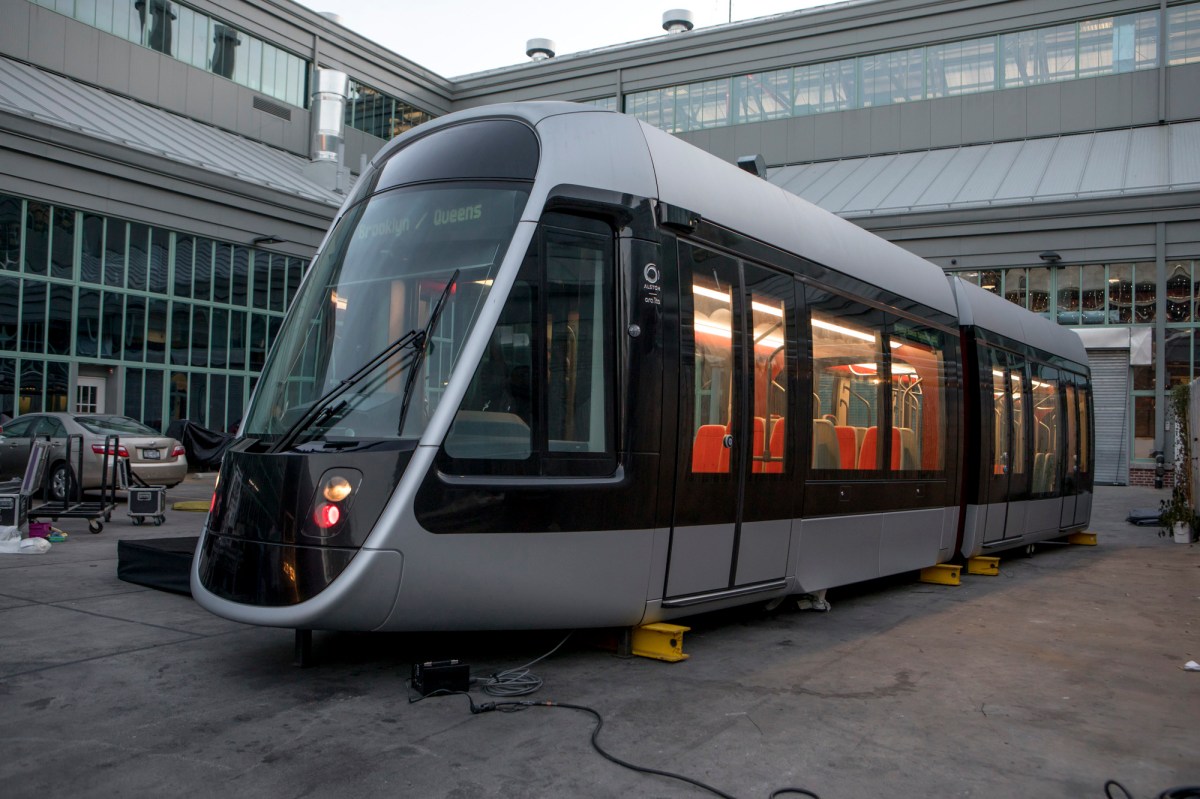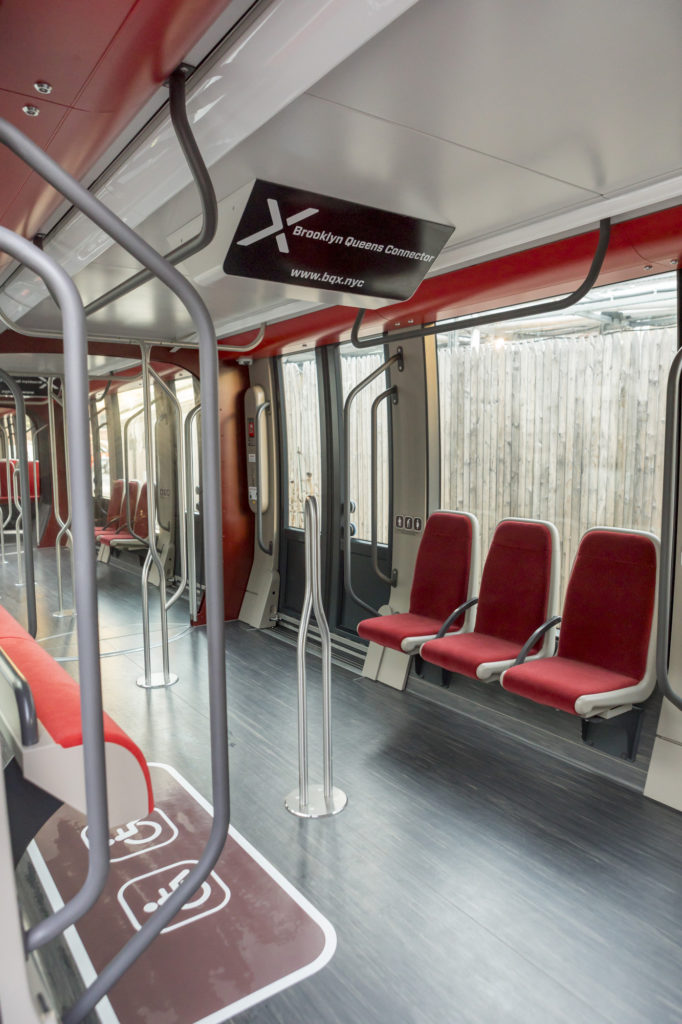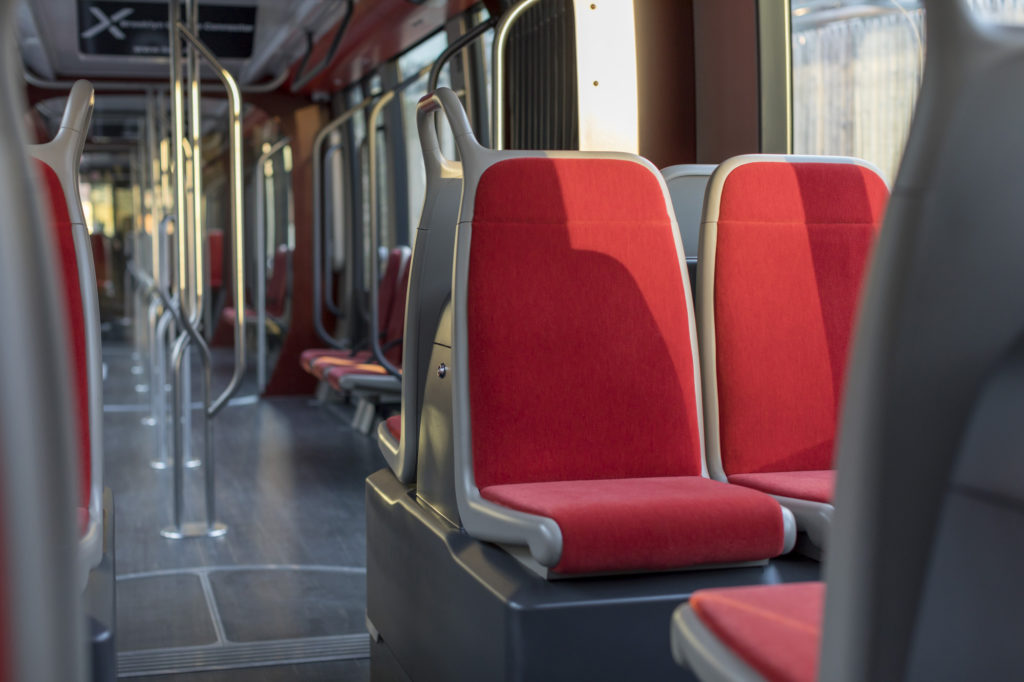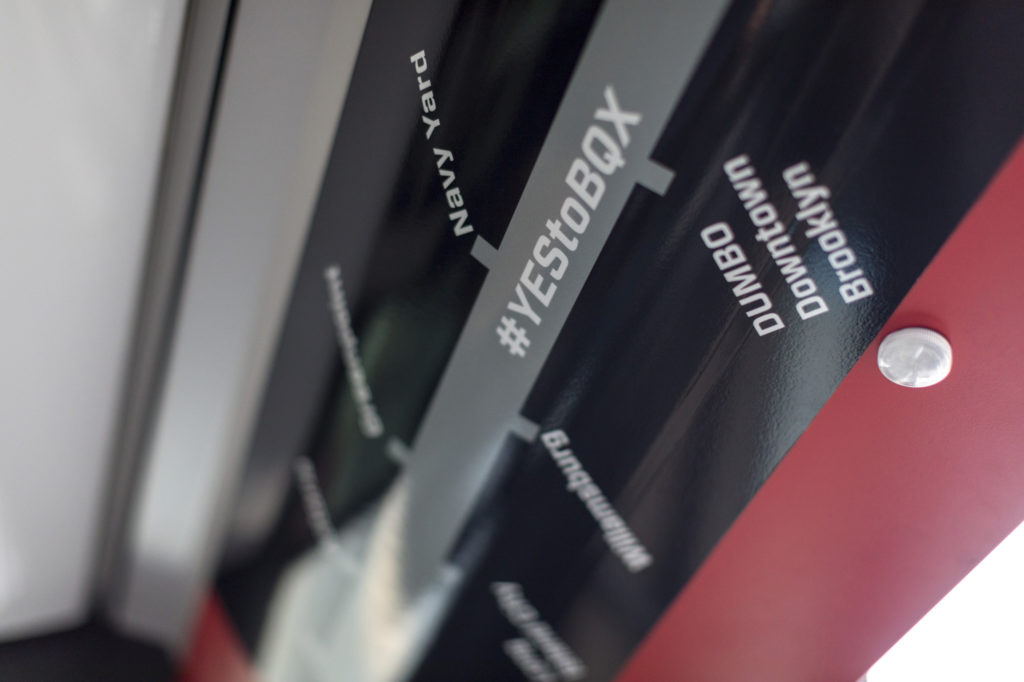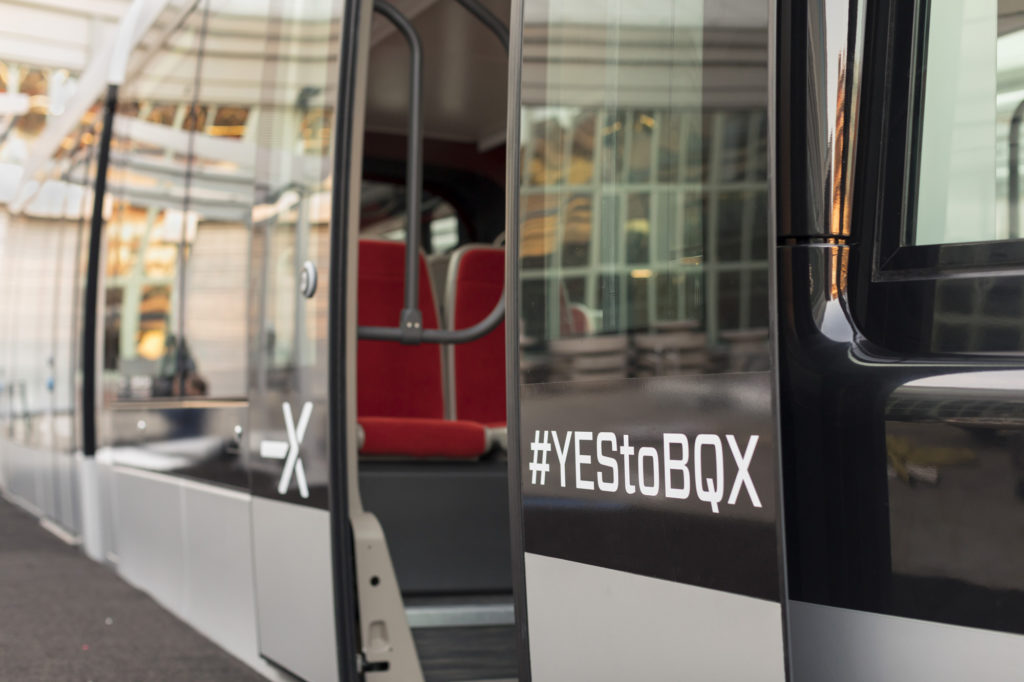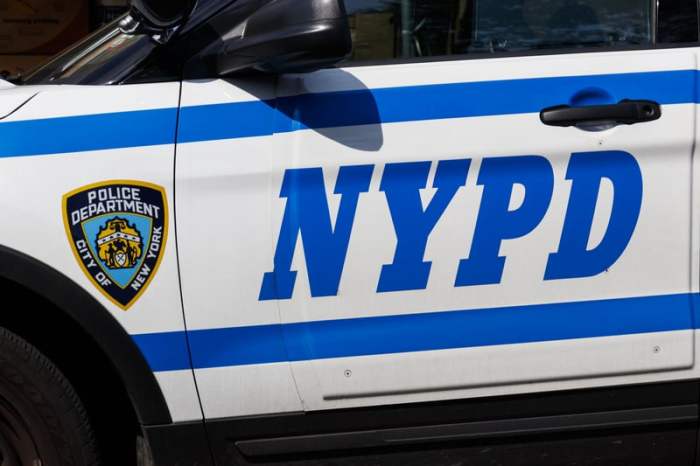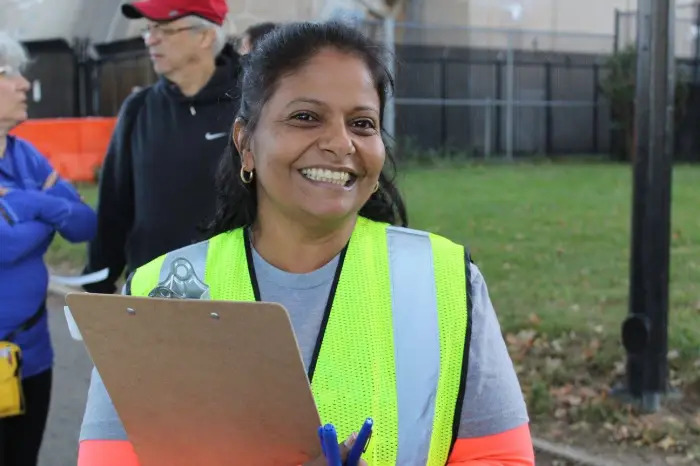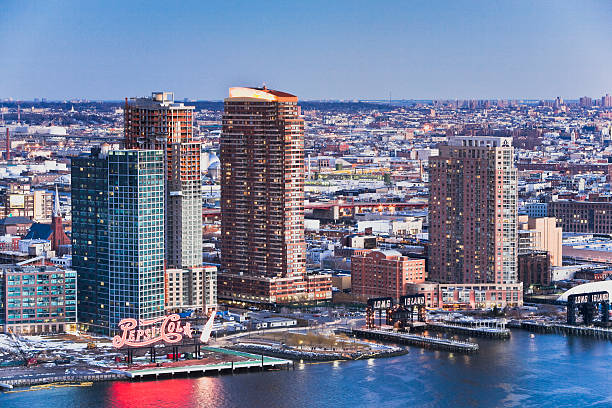The organization behind a plan to create a light rail that would connect the Brooklyn and Queens waterfront shows off a prototype of the car at the Brooklyn Navy Yard on Monday.
Mayor Bill de Blasio announced his support in February 2016 for a proposal that would create the 14-mile streetcar line connecting Red Hook, Brooklyn, to Astoria. Friends of the Brooklyn Queens Connector, a nonprofit made up of a coalition of community groups and real estate companies like Tishman Speyer, invited officials to view what the streetcar would look like.
“Today we’re providing New Yorkers with their first real taste of what the BQX would look and feel like, and calling on the city to bring light rail service to areas long underserved by reliable mass transit,” said Ya-Ting Liu, executive director of Friends of the Brooklyn Queens Connector. “It’s clear: now is the moment to move forward with this transformative project to connect hundreds of thousands of New Yorkers, including over 40,000 public housing residents, to jobs, education, healthcare and recreation along the route.”
The prototype, which consisted of two cars and a driver cab, stretched 46 feet long and 8.7 feet wide. The group argues that the streetcar has many advantages including high-capacity cars, street-level boarding for people with mobility challenges, open gang-ways and potentially higher average speeds than MTA buses.
“The Astoria Houses have long felt forgotten by the city when it comes to transportation and only recently, thanks to new ferry service, is this beginning to change,” said Claudia Coger, Resident Association President of the NYCHA Astoria Houses. “But our residents need more reliable options. This is an issue of economic justice and it is why we have been so adamant about the need for the BQX. Mayor de Blasio should move this project forward now, to provide relief to the thousands of working families in the Astoria Houses, and the many more along this increasingly important corridor.”
In January 2016, Friends of the BQX commissioned a study to gage how feasible the plan was. The city’s Economic Development Corporation conducted its own study and found that the project would cost an estimated $2.5 billion, up from the $1.7 billion suggested by the nonprofit group. The EDC also estimates that yearly operating and maintenance costs would go up to $31.5 million instead of the $26 million proposed by Friends of the BQX.
The nonprofit argues that the light rail would serve more than 400,000 New Yorkers who live along the route, as well as 300,000 who work along the corridor in employment hubs like the Brooklyn Navy Yard, Brooklyn Army Terminal, Industry City and Long Island City.
In May 2016, the Department of Transportation and the EDC invited Astoria residents to discuss what specifics residents would like to see if the plan were implemented. There was no official consensus about where in Astoria the car should be installed – some argued Vernon Boulevard was the right corridor while other residents suggested 21st Street or 11th Street.
Many expressed concerns about how long the construction phase would take or how the project would affect housing prices.
Sources this month told the New York Post that the project is “going to die” because of the mayor’s strained relationship with Gov. Andrew Cuomo.
“It is all about the governor,” the source told the New York Post. “This BQX will have to pass over state-owned pieces of land, and the governor . . . can just say ‘no.’ Also, the MTA has not said it will make the BQX part of the MetroCard system. It can’t work without that — no matter what the mayor has said publicly.”
A spokesperson for the mayor told The Post that the city can design a route that would bypass state land and that the main determinant of whether the streetcar gets built is funding.
The city announced that if the project moves forward, construction will begin in 2019 and the streetcar will be operational in 2024.

